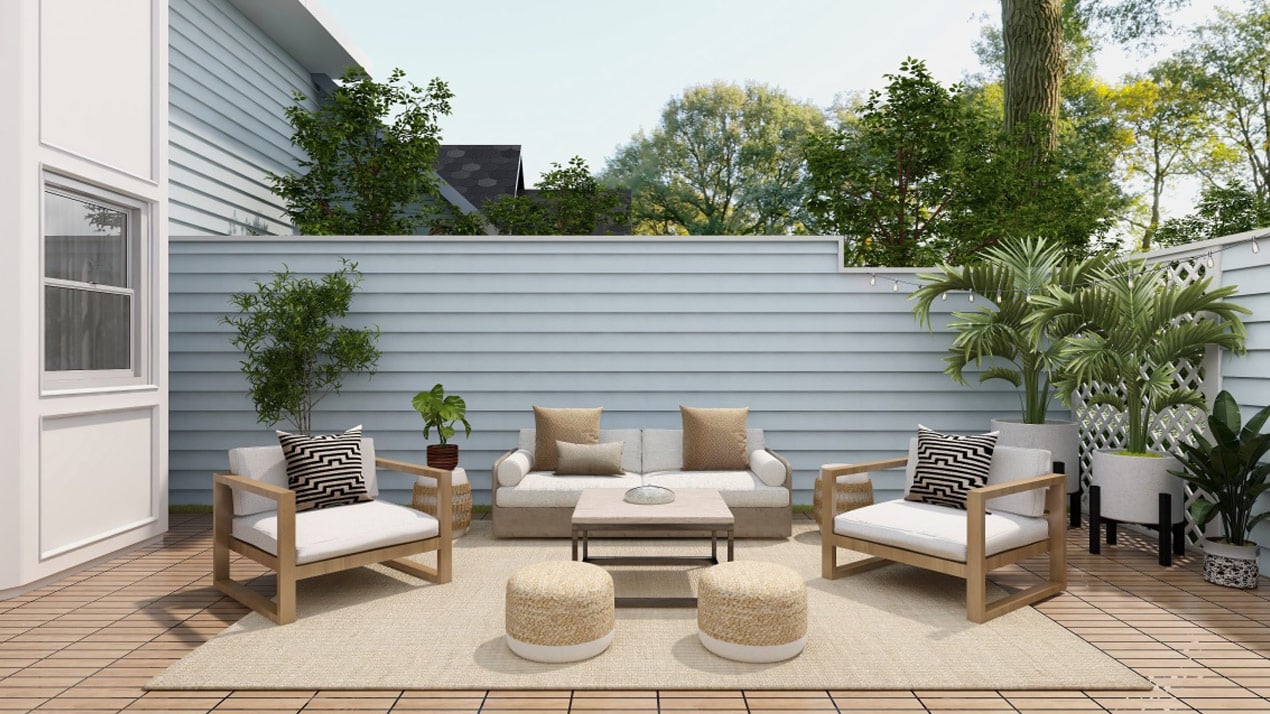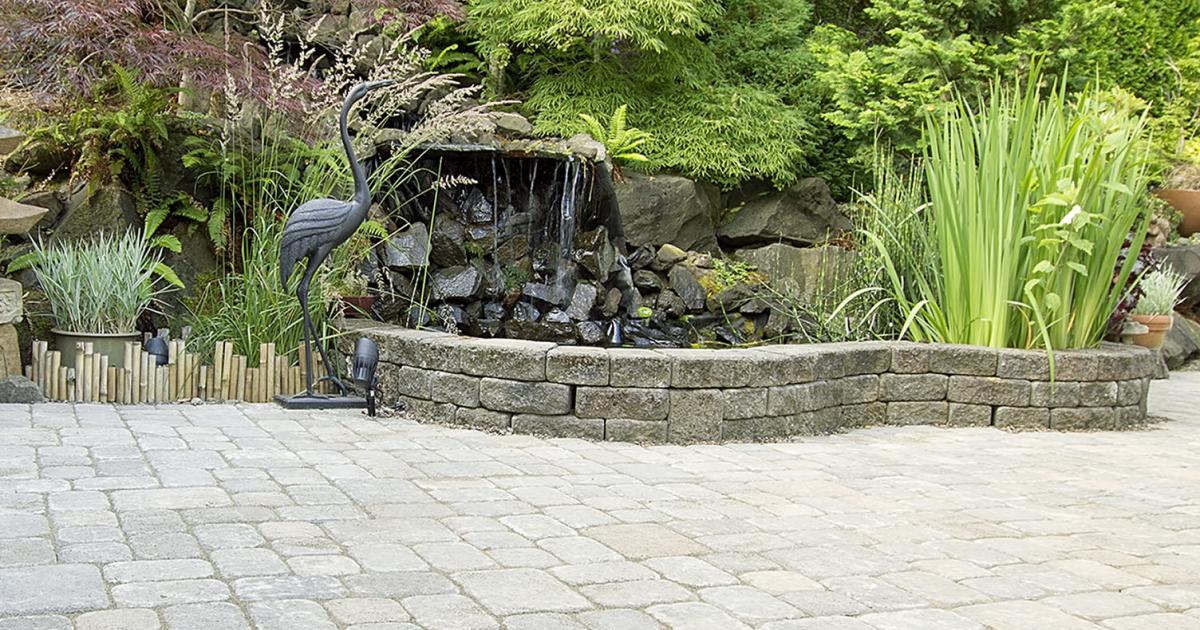Sustainable patio design ideas are more than just a trend; they're a way to create an outdoor space that's beautiful, functional, and environmentally conscious. By incorporating eco-friendly materials, water-saving features, and energy-efficient practices, you can transform your patio into a haven that benefits both you and the planet.
This guide explores a variety of sustainable design principles, from selecting recycled materials to implementing green roof solutions. We'll delve into practical tips and strategies that empower you to design a patio that minimizes its environmental impact while maximizing your enjoyment of it.
Sustainable Materials

Choosing sustainable materials for your patio design is a key step in creating an environmentally friendly outdoor space. Sustainable materials are not only good for the environment but can also be durable, stylish, and cost-effective.
Benefits of Recycled or Reclaimed Materials, Sustainable patio design ideas
Using recycled or reclaimed materials for patio furniture and structures offers several benefits:
- Reduces waste: By giving discarded materials a new life, you lessen the demand for new resources and reduce landfill waste. This helps conserve natural resources and minimize the environmental impact of manufacturing new materials.
- Lowers carbon footprint: The production of new materials is energy-intensive and contributes to greenhouse gas emissions. Using recycled materials significantly reduces the carbon footprint associated with your patio design.
- Cost-effective: Recycled or reclaimed materials are often more affordable than their virgin counterparts, making them a budget-friendly option for your patio project.
- Unique character: Reclaimed materials often have unique textures, colors, and imperfections that add character and charm to your patio design.
Examples of Sustainable Materials
There are many sustainable materials available for patio design, each with its own unique properties and benefits:
Bamboo
Bamboo is a fast-growing, renewable resource that requires minimal water and fertilizer. It is a strong, durable material that can be used for furniture, decking, and other outdoor structures.
Teak
Teak is a naturally durable and weather-resistant hardwood that is known for its rich color and beautiful grain. Sustainable teak comes from forests that are managed responsibly to ensure long-term sustainability.
Recycled Plastic
Recycled plastic can be used to create a wide range of patio furniture and accessories. It is durable, weather-resistant, and comes in various colors and styles.
Sourcing Sustainable Materials
When sourcing sustainable materials for your patio design, consider the following tips:
- Look for certifications: Seek out materials that are certified by organizations such as the Forest Stewardship Council (FSC) or the Sustainable Forestry Initiative (SFI). These certifications ensure that the materials are harvested from responsibly managed forests.
- Support local businesses: Local businesses often source materials from nearby suppliers, reducing transportation costs and environmental impact.
- Ask about the origin of materials: Inquire about the source of materials and their sustainability practices. Ask about recycling and reuse programs, and if the materials are sustainably harvested or produced.
- Consider salvaged or reclaimed materials: Check out local salvage yards, antique stores, and online marketplaces for unique and sustainable materials.
Waste Reduction

A sustainable patio design minimizes waste during construction and throughout its lifespan. This includes thoughtful material selection, efficient construction techniques, and responsible waste disposal.
Composting Techniques for Yard Waste
Composting is a natural process that transforms organic waste into nutrient-rich soil amendment. It reduces the amount of yard waste sent to landfills, which are often overflowing and contribute to environmental problems.
- Start a compost bin or pile: Choose a location that receives some shade and has good drainage. Layer brown materials like leaves and twigs with green materials like grass clippings and food scraps.
- Turn the compost regularly: This helps to aerate the pile and promotes decomposition.
- Maintain a balanced carbon-to-nitrogen ratio: A good ratio is about 25:1.
- Add water as needed: The compost should be moist, but not soggy.
- Avoid adding certain materials: These include meat, dairy, bones, and diseased plants.
Compost can be used to fertilize plants in your garden, reducing the need for synthetic fertilizers.
Designing a Patio with Minimal Waste Generation
A well-designed patio uses durable materials that require less frequent replacement, reducing waste over time.
- Choose long-lasting materials: Opt for materials like stone, concrete, or recycled plastic lumber. These materials are resistant to weathering and decay, extending the patio's lifespan.
- Minimize waste during construction: Plan carefully to avoid over-ordering materials. Consider using salvaged or reclaimed materials, which can reduce waste and add character to your patio.
- Recycle or repurpose leftover materials: Many materials can be recycled or repurposed for other projects.
- Use local materials: This reduces transportation costs and emissions.
Final Wrap-Up

Designing a sustainable patio is not only a responsible choice but also a rewarding one. By embracing eco-friendly principles, you can create an outdoor sanctuary that aligns with your values, enhances your well-being, and contributes to a healthier planet. From the materials you choose to the plants you select, every element can contribute to a more sustainable and beautiful outdoor living space.
Key Questions Answered: Sustainable Patio Design Ideas
What are some affordable sustainable patio materials?
Recycled plastic lumber, reclaimed wood, and bamboo are all budget-friendly options that are both durable and environmentally responsible.
How can I create a water-wise patio?
Choose drought-tolerant plants, install a rain barrel, and use permeable paving materials to allow rainwater to seep into the ground.
What are some energy-efficient lighting options for my patio?
Solar-powered lights, LED string lights, and motion-sensor lights are great choices for reducing energy consumption.
Can I compost yard waste on my patio?
Yes, composting is a great way to reduce waste and create nutrient-rich soil for your plants. You can use a compost bin or create a simple compost pile.
